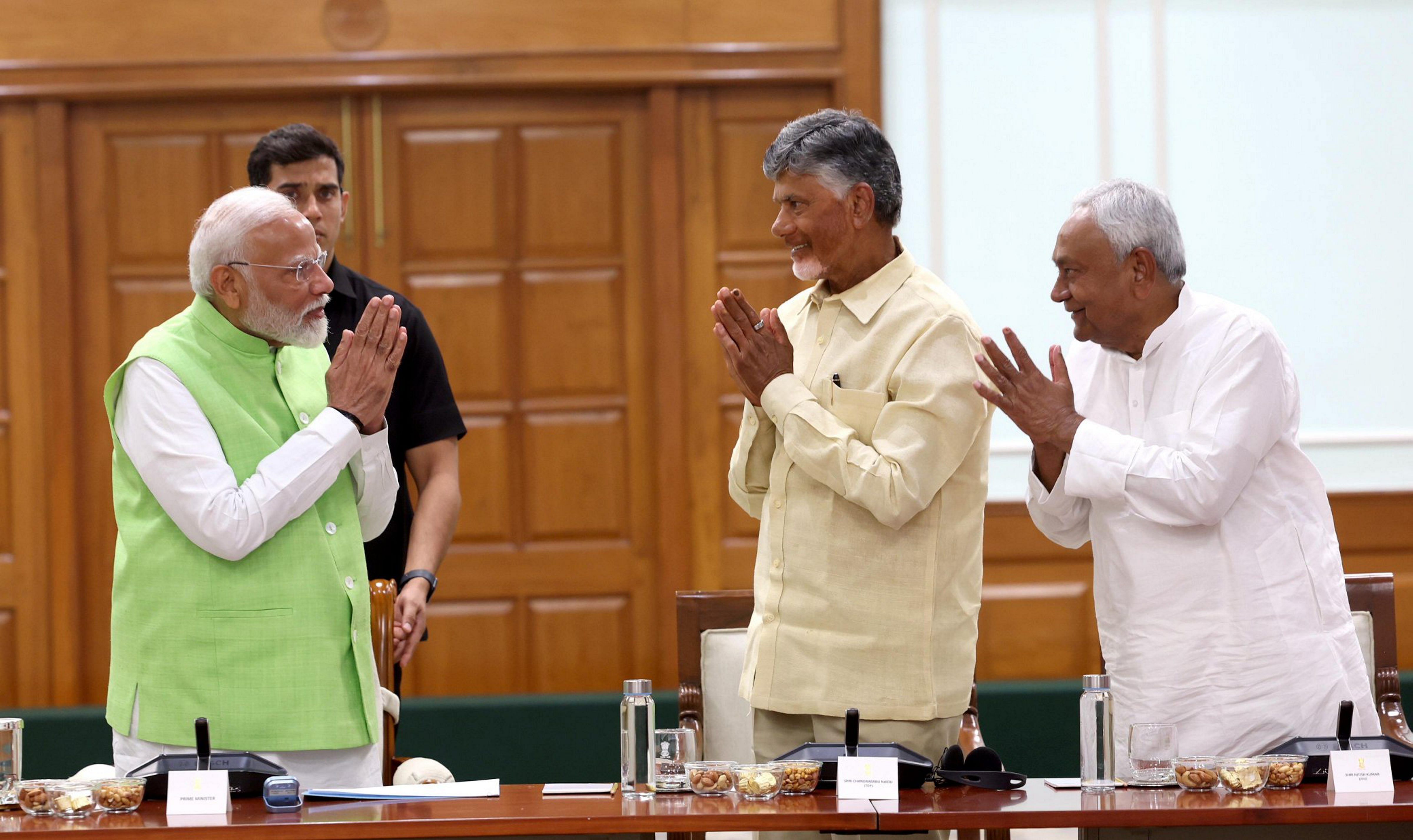
PM Modi with TDP chief N Chandrababu Naidu and JD(U) chief Nitish Kumar during the NDA meeting in New Delhi, Wednesday, June 5, 2024.
Credit: PTI Photo
If Arunachal Pradesh and Sikkim saw a return to power of ruling parties in the recent assembly elections, Andhra Pradesh and Odisha saw the toppling of incumbent governments. While the NDA, led by Chandrababu Naidu’s Telugu Desam Party (TDP), stormed to power in AP, decimating Jaganmohan Reddy’s YSR Congress, there was a reversal of positions between Naveen Patnaik’s Biju Janata Dal and the BJP in Odisha. For the BJP, it has meant a ride to power, though as a minor partner, in an alliance in a state in the south where it is not in power anywhere, and its rise to power in an eastern state for the first time. The party has for years tried to make inroads in both states through different strategies. The performance in both states will help it at the national level, too, with more MPs from Odisha and support from a sizeable TDP contingent for a coalition government at the Centre.
In AP, the TDP won 135 seats, and its alliance partners, the Jana Sena led by Pawan Kalyan, and the BJP, secured 21 and 8, respectively. The YSR Congress was reduced to 11 seats. The election saw an almost total rejection of the YSR Congress and an affirmation of faith in three-time Chief Minister Chandrababu Naidu. The YSR Congress government did not have a reputation for governance, though it had offered many welfare schemes. The government was also seen as authoritarian and vengeful, especially when it arrested Chandrababu Naidu on corruption charges and sent him to jail last year. The sympathy that Naidu garnered then may have helped him. Naidu made better promises of welfare and development, with a focus on jobs and industry, which had greater appeal with the people. The confusion created by the YSR Congress government about the state capital also worked against the party.
In Odisha, the BJP ended Naveen Patnaik’s 24-year-long tenure, winning 78 seats against the BJD’s 51, riding an anti-incumbency wave. If Patnaik had won a sixth term, he might have surpassed the record for the longest chief ministerial tenure, now held by Sikkim’s Pawan Chamling. Patnaik, who had never lost an election until now, lost one of the two seats he contested. There was voter fatigue and an urge for change among the people. Patnaik’s reliance on Tamil Nadu-born former bureaucrat V K Pandian was used by the BJP to invoke sub-national Odia sentiments. Other issues related to Odia pride were also used by the party. Patnaik and the ruling establishment had taken power for granted and lost touch with the people after holding power for decades. The cooperation and support the BJD often extended to the BJP at the national level worked against it in the state.